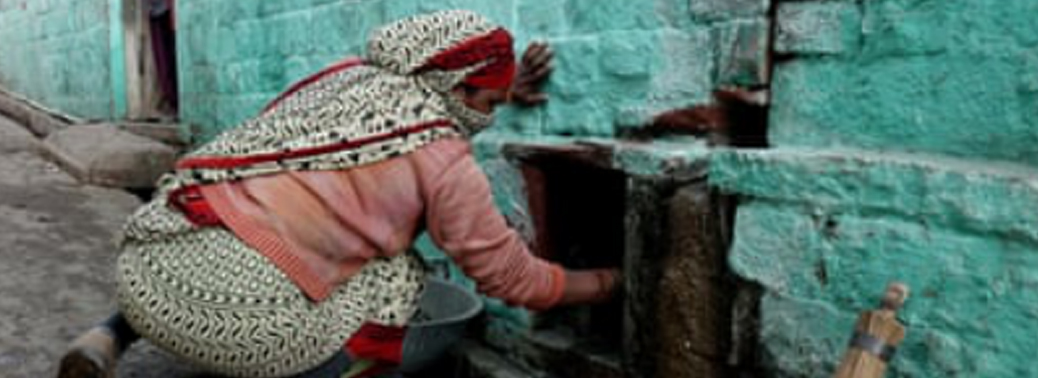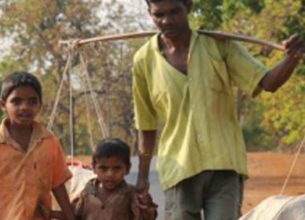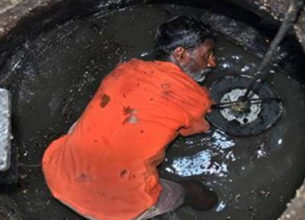MANUAL SCAVENGING DEATH TOLL INCREASED
12, Feb 2020

Prelims level : Rights Issues
Mains level : GS-II Welfare schemes for vulnerable sections of the population by the Centre and States and the performance of these schemes; mechanisms, laws, institutions and Bodies constituted for the protection and betterment of these vulnerable sections.
Why in News?
- According to the Social Justice and Empowerment Ministry, the death toll of Manual Scavengers has been increased by 62% from 68 in 2018 to 110 in 2019 (while cleaning septic tanks and sewers).
What is Manual Scavenging?
- Manual scavenging refers to the practice of manually cleaning, carrying, disposing or handling in any manner, human excreta from dry latrines and sewers.
- The practice of manual scavenging is linked to India’s caste system where so-called lower castes were expected to perform this job.
- Manual scavengers are amongst the poorest and most disadvantaged communities in India.
- Frequent deaths occur as manual scavengers don’t even have adequate tools and protective gear to clean the manhole. It often involves using the most basic of tools such as buckets, brooms and baskets.
What are the issues in Manual Scavenging?
- However, while manual scavenging for many may have ended as a form of employment, the stigma and discrimination associated with it lingers on.
- This makes it difficult for liberated manual scavengers to secure alternative livelihoods.
- People could once again return to manual scavenging in the absence of other opportunities to support their families.
- Correctly identifying manual scavengers remains a key challenge.
What are the Government Interventions?
- In 1993, the Government of India enacted the Employment of Manual Scavengers and Construction of Dry Latrines (Prohibition) Act.
- The act prohibited the employment of manual scavengers for manually cleaning
dry latrines and also the construction of dry toilets (that do not operate with a flush).
- It provided for imprisonment of up to a year and a fine.
- In 2013, this was followed by the Prohibition of Employment as Manual Scavengers and their Rehabilitation Act, 2013,which is wider in scope and importance, acknowledging the urgency of rehabilitating manual scavengers.
- The act seeks to reinforce this ban by prohibiting manual scavenging in all formsand ensures the rehabilitation of Manual Scavengers to be identified through a mandatory survey.
What does the new act says?
- Prohibits the construction or maintenance of insanitary toilets.
- Prohibits the engagement or employment of anyone as a manual scavengerviolations could result in a years’ imprisonment or a fine of INR 50,000 or both.
- Prohibits a person from being engaged or employed for hazardous cleaning of a sewer or a septic tank.
- Offences under the Act are cognizable and non-bailable.
- Calls for a survey of manual scavengers in urban and rural areas within a time-bound framework.
- A Supreme Court order in March, 2014, makes it mandatory for the government to identify all those who died in sewerage work since 1993 and provide Rs.10 lakh each as compensation to their families.
- The Government of India has adopted a two-pronged strategy of eliminating insanitary latrines through demolition and conversion into sanitary latrines and developing a comprehensive rehabilitation package for manual scavengers through a survey.
- A comprehensive Rehabilitation Package has recently been put together that includes livelihoods and skill development, access to education for children of former manual scavengers and alternate livelihoods.
What are the Other Initiatives?
- The establishment of National Safai Karamcharis Commission (NFKC)to work for the welfare and upliftment of the Safai Karamcharis.
- Delhi Government has launched the Mukhya Mantri Septic Tank Safai Yojana recently – a scheme aimed at helping people in waste management and ensuring the safety of sanitation workers.
- According to the government, the Delhi Jal Board(DJB) will deploy 80 trucks along with trained staff to ensure free cleaning and maintenance of septic tanks across Delhi.
Way Forward:
- The Swachh Bharat Abhiyan should make expansion of the sewer network a top priority and come up with a scheme for scientific maintenance that will end manual cleaning of septic tanks.
- Schemes like Mukhya Mantri Septic Tank Safai Yojana should be implemented properly throughout the nation.
- The Ministry of Drinking Water and Sanitation in its manual of 2016 on toilet design has noted that in rural areas, mechanical pumps to clear septic tanks are not available. It should be met before more lives are lost.











